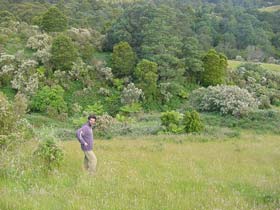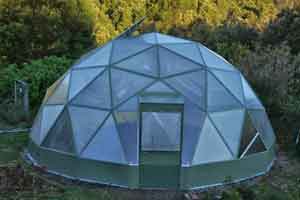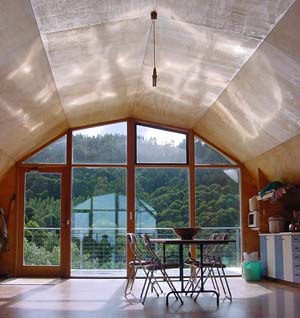Grow forest?
One of our main aims, apart from achieving pollution-free self-sufficiency is to restore the forest that was destroyed here nearly 100 years ago as a result of barbarian and ignorant policy of the Australian government.
The policy was that unless people cleared their land from trees, the land was taken away from them. What followed was a systematic destruction of forests on a large scale. Trees were cut down, rolled to gullies and set on fire to burn for months. What an achievement ...
If you feel like doing something to restore the forest for future generations you can give us a hand. You can come here to Mt Best for a few days. We will provide accommodation, meals and thought provoking conversation in return for your help. Tasks include work in our native plant nursery, fencing, weed control and planting trees, depending on season and the phase of the project. Please contact Tom
Our Project
We plan to gradually re-forest about 50 out of 63 ha of our property. While we applied for some grants to assist us in getting the necessary supplies, we need to contribute many years of our own labor.
Everyone knows how to destroy the forest. However, contacts with experts, local officials and those who tried reveal that no one really knows how to restore a forest eco-system from scratch. The main challenges are:
- Animal grazing. Animals, both native and introduced, simply LOVE young trees. It is their best food. Some of our neighbors re-planted thousands of trees 4 times over only to find out that not a single tree survived. For this reason it becomes necessary to restrict animal access to reforestation areas by appropriate fencing until forest vegetation becomes sufficiently established. In the mountainous terrain at Mt Best this is the most costly and the most laborious part of the project.
- Weeds. They grow faster than trees. If they are not controlled in some way, they win. Eliminating or minimizing the use of toxic chemicals in weed control requires a lot of lateral thinking combined with lots of manual labor.
- Abused soil. After decades of chemical fertilization and compacting by cattle, the soil is hard, acid, biologically inactive and infertile. On slopes it doesn't hold water. Water simply runs down leaving plants starving for moisture and nutrients. As our climate quickly becomes hotter and drier, this problem needs to be addressed efficiently.
Unlike some state forests, our forest will never be cleared, simply because the owners of the land are committed to take care of it.










